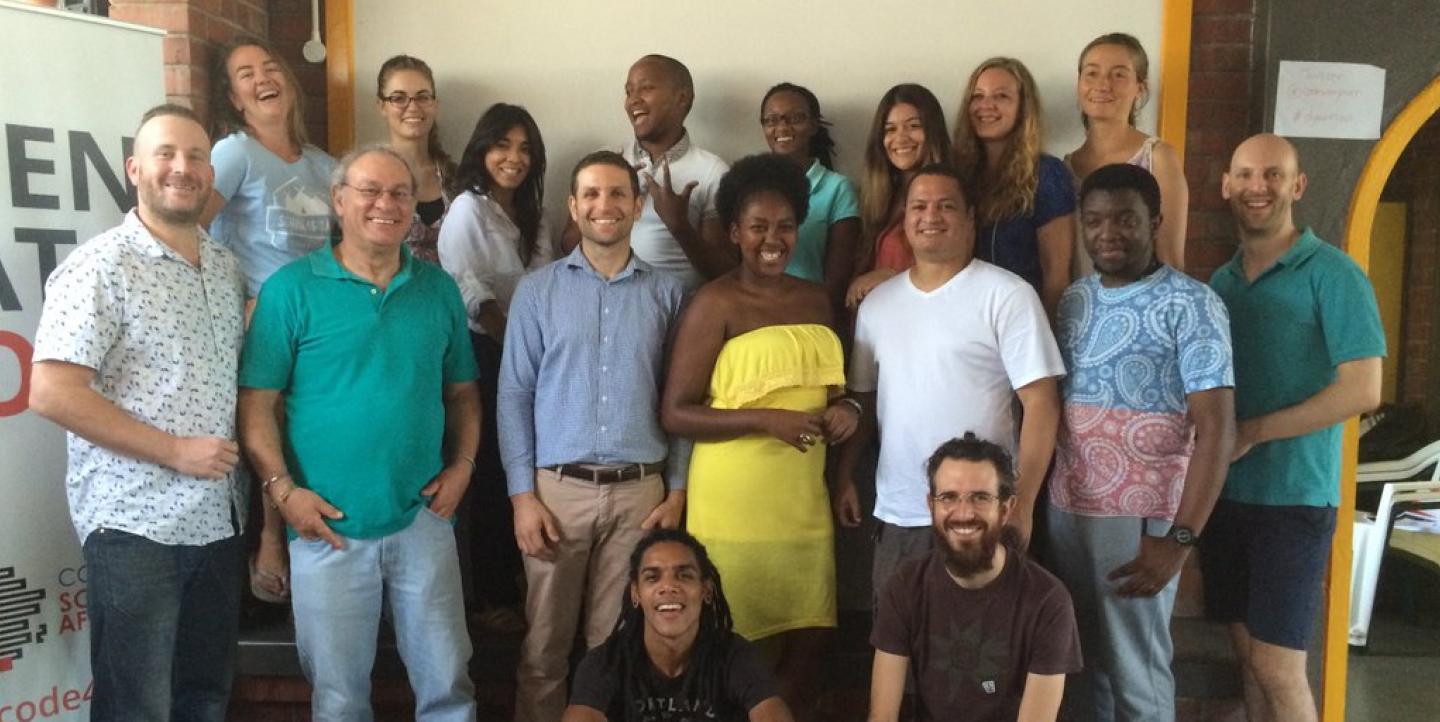Former ICFJ Knight Fellow Raymond Joseph led the first cohort of the Code for South Africa Data-Driven Journalism Academy, instructing eight experienced local journalists on how to bolster their reporting with data. The reporters, who came from some of South Africa’s largest news organizations, completed two weeks of training and then worked side by side with developers and data analysts for 10 weeks to produce data-driven stories, using innovative tools like Silk, CartoDB, Wazimap, infogr.am and Piktochart. The second cohort of the academy began June 6.
Joseph talked with IJNet about how the academy helped its first group of journalists improve their skills:
IJNet: How are most journalists in South Africa using data in their reporting, and why is it important to promote and teach data-driven storytelling to local reporters?
Joseph: Very little data journalism is happening. When it is happening, a lot of it is pie charts, graphs, bar graphs, that sort of thing. We’re just catching up with what is happening in the United States, the U.K. and the Spanish-speaking world, but there’s so much data being created now that journalists who can’t work with data are missing out big time on some of the most powerful sources. And as the Panama Papers and many more have proven, without data journalism, you would never be able to do those really huge stories.
What challenges do data reporters face? How is the Code for South Africa academy helping its participants overcome these difficulties?
These days, [data journalism] resources are just not available in the newsroom. Newsroom [developers], analysts, the data wranglers, they’re just not available here yet. I want to see a day that, when a journalist is doing an interview, one of the questions they ask the source is ‘Do you have any data available from your research? Do you know where I could get data?’ I think that’s really important; it’s a big vision from a very small, very focused position.
What we’re setting out to do is create journalists who on their own are able to scrape, clean and analyze data, find the stories, tell the stories and visualize the data, and have them as self-contained as possible. The journalists leave our academy and go back into the newsroom, taking these skills with them. What we hope to do with the academy is make systemic changes in the newsroom.
"It's not about a dataset. Imagine you are talking to a source, ask the same questions, but of the data." @Dqlepiz pic.twitter.com/yaiXKwea01
— Code4SA Academy (@code4sajourn) February 3, 2016
What stories have academy reporters produced using their data skills?
Our story about the informal settlement that was not counted in the last census is a good example of reporting beginning with the process of looking at a single data set and interrogating it, looking for stories that are not obvious. This story was a real team effort for us. It began when the city of Cape Town did a data dump [that included] a file with around a dozen different scans of PDFs that geolocated data where the city had toilets. We were able to [use the toilet locations to] discover where these informal settlements were located. We then got a newer data set and used Google Earth to overlay it with the first one and see how much the settlements had grown. We were able to identify nearly 100 different settlements that were never counted in the 2011 census.
With this story, we were able to let the data do the heavy lifting, but you’ve still got to go and commit an act of journalism on it. And people forget that all the time. We went off to look for these informal settlements, and we focused on one particular one. This settlement had existed at the time of the census, but only part of it was counted. So the question became, has it grown since then? Or was just part of it not counted?
#Datajournalism is a team game: a big takeaway as @code4sajourn's first cohort draws to an end pic.twitter.com/ddy2LbMfM6
— Raymond Joseph (@rayjoe) April 15, 2016
Since the first cohort ended in April, have any of the journalists who participated taken on new roles in their newsrooms?
The Times Media Group has recognized that they need to give its reporters [who participated in the academy] the environment in which to work and allow them to grow. They’ve put these people in place as the beginnings of a data team, led by a reporter within the company who I would say is a true data journalist. He’s taken the reporters under his wing to start something new.
How do you see the data academy continuing to grow and evolve?
I see a great future for the academy. It’s a small beginning … but knowing the lack of resources in newsrooms, what we’re trying to do is give people the ability to tell and do as much of it as themselves. So, for example, we only use free versions of tools. It’s no use teaching people how to use something they can't use when they walk away. That’s just going to frustrate them.
We’re just at the beginning of the journey that we’ve embarked on. We saw it as a three-year project, and the ultimate goal ... is for it to become a fully functional school with a newsroom attached. I think we’re heading in the right direction.
Image courtesy of Code for South Africa.

